2024 July 31
W.F. Denning’s lost comet has been found
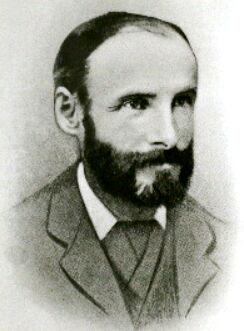
The first director of the Comet Section, William Frederick Denning, discovered his fifth and final comet from Bristol on the evening of 1894 March 26. At the time the comet was in northern Leo but it was already quite faint at around 12th magnitude, having passed through perihelion around six weeks earlier. Astrometry was collected through April, May and June [Cometography vol 2, pp 716-717] and orbit calculations showed that the comet had a period of around 7.5 years and a perihelion distance of around 1.1 au. The last astrometry of the comet was obtained on 1894 June 5.91 and the comet was not seen at subsequent returns. It was designated D/1894 F1 (Denning). The page from a contemporary JBAA here shows the early orbital elements and it speculates that the comet may be a return of Kindermann’s Comet of 1746. In fact, that comet was almost certainly fabricated (see entry KM1746-1 in Meyer’s Catalog of Unconfirmed Comets, Vol 1).
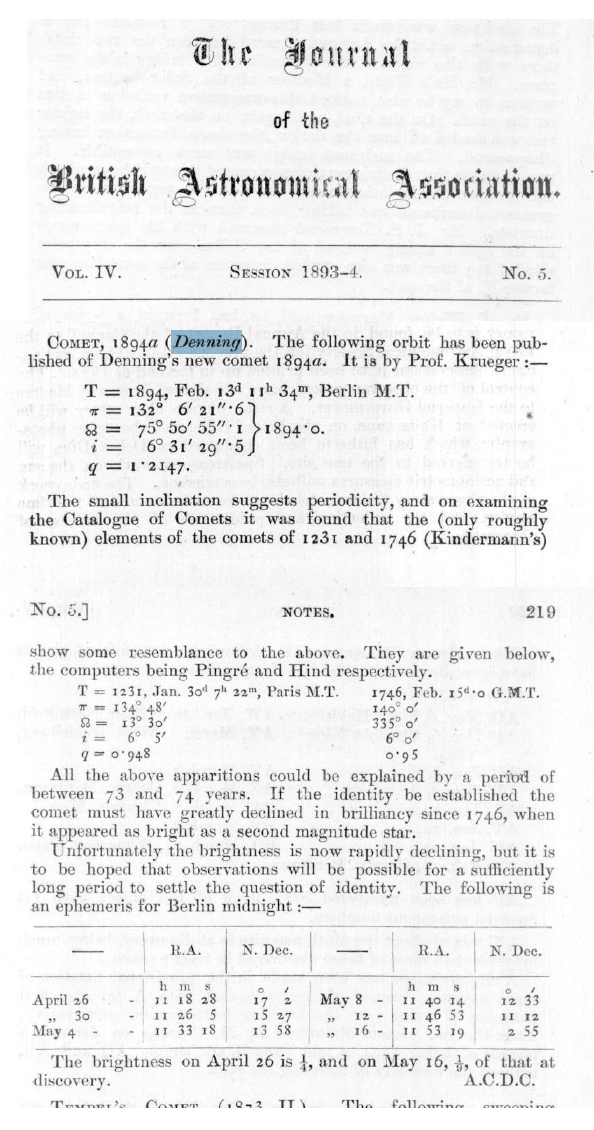
In 1977 Richard Buckley published a paper on lost comets in the Journal (JBAA 87,3 pp 226-239). This paper included D/1894 F1 (at that time called 1894 I). Buckley recomputed the orbit from the 1894 observations and got a period of 7.39 years. He rated the chance of recovery of the comet as “fair” although it had not been seen at any of the 10 returns since its discovery in 1894. We now know that the actual period in 1894 was 7.43 years.
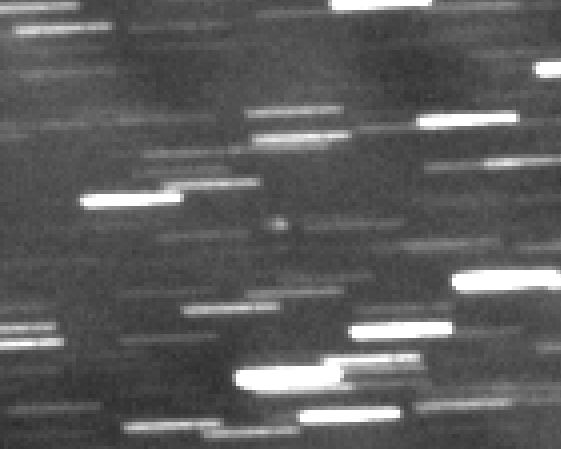
Thirty years after Buckley’s paper, on 2007 April 17, an apparently asteroidal object was discovered by the LINEAR survey. This was designated 2007 HE4. Peter Birtwhistle imaged this object on that night and reported it as magnitude 19.1. The object was observed until May 18 and the short arc allowed computation of the orbit. 2007 HE4 was in an elliptical orbit with q=1.6 au and a period of around 9.3 years.
This image, by Peter Birtwhistle, is a crop of a stack of 51 x 30 sec exposures, mid-time 2007 Apr 18.875 UTC, the field is 5.0 x 4.0 arcmin, with North up, pixel size is 2.14 arcsec. The Instrument used was a 0.40-m Schmidt-Cassegrain. The cometary nature was not recognised in 2007 but this image shows that the object is clearly extended to the east.
On 2024 July 25 Peter VanWylen posted on comets-ml that his analysis showed that 2007 HE4 had shown cometary activity in 2007. Two days later Maik Meyer responded that he had managed to link the two objects. Peter Birtwhistle then checked his images from 2007 and confirmed that the object was extended to the east. 2007 HE4 had been the first observed return of D/1894 F1 since the original discovery!
Meyer provided the following orbital elements for D/1894 F1 for epoch 2025 December 1.0 TT on the Comet Section mailing list:
Orbital elements: D/1894 F1 Perihelion 2025 Dec 4.06727 TT = 1:36:52 (JD 2461013.56727) A1: -3.83e-9 A2: 3.58e-10 AU/day^2 Epoch 2025 Dec 1.0 TT = JDT 2461010.5 Earth MOID: 0.5820 Ju: 0.0606 M 359.67526526 Ma: 0.0222 Meyer n 0.10587093 Peri. 109.41912 a 4.42538997 Node 20.62196 e 0.6471858 Incl. 4.02545 (J2000 ecliptic) P 9.31 H 15.0 G 0.15 q 1.56134008 Q 7.28943986 242 of 312 observations 1894 Mar. 27-2007 May 18; mean residual 3".28
Unlike the planets, comet orbits can be subject to significant perturbations due to the gravitational effects of the planets, mainly Jupiter, and so the orbital elements change with time. I have used these elements to integrate the orbit back to 1890 and the figures below show the evolution of the perihelion distance, eccentricity, inclination and period. The major changes are due to encounters with Jupiter. Using the reported magnitudes of 2007 HE4 and and adjusting for the very inaccurate magnitudes reported in 1894 I get a magnitude formula of:
m1 = 14 + 15 log10(r) + 5 log10(d)
Using the integrated elements the change of magnitude with time is shown here. It was at its brightest for the return of 1894 and only reached mag 18 in 2007. Sam Deen has investigated the circumstances of various returns and in most cases the geometry is very poor. So far no images of the comet have been found at any of the other returns. The next perihelion is in 2025 December when the comet might reach 18th magnitude again with an approach to the Earth of less than 1 au in 2026 March.
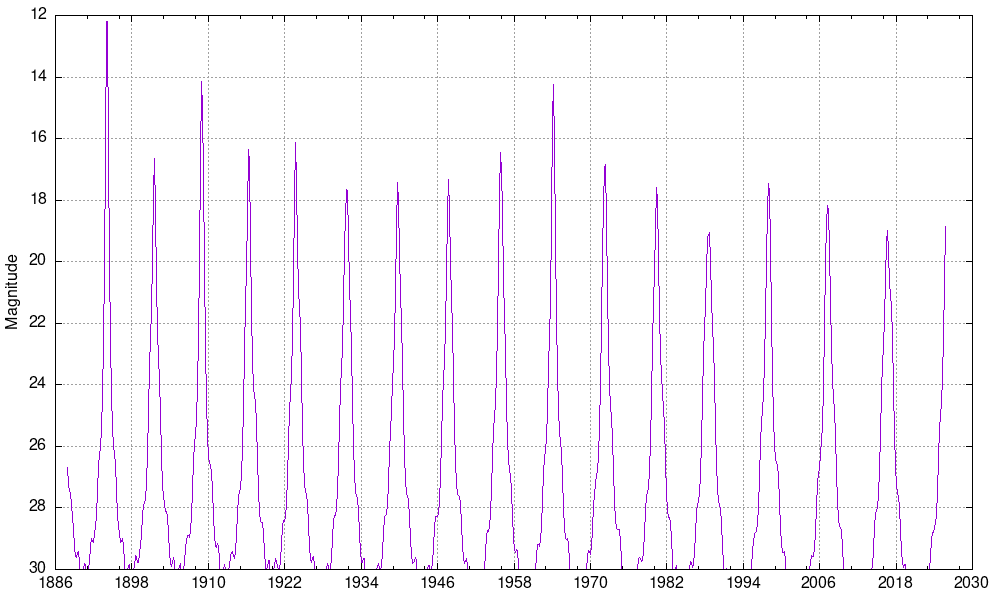
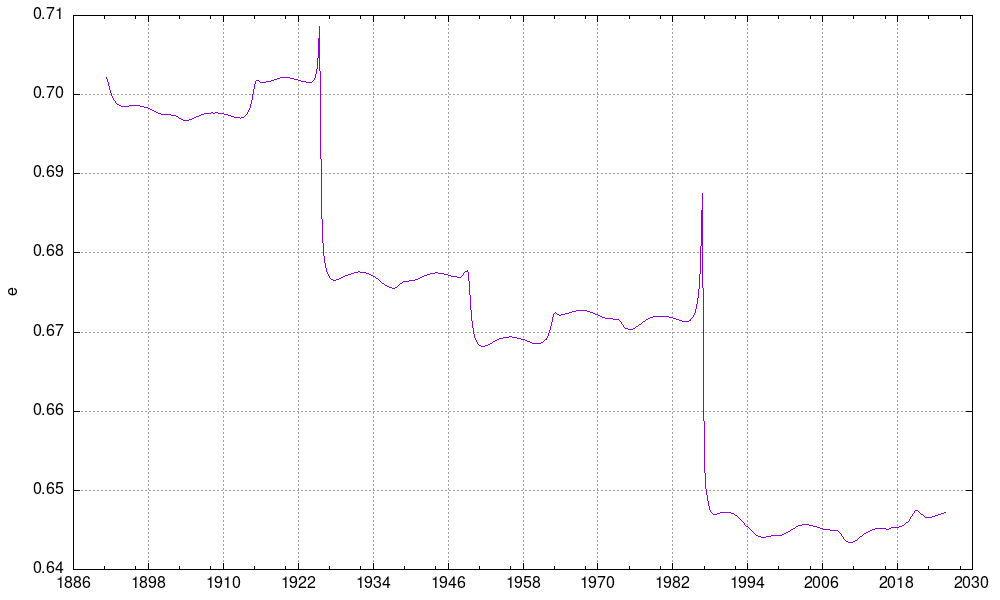
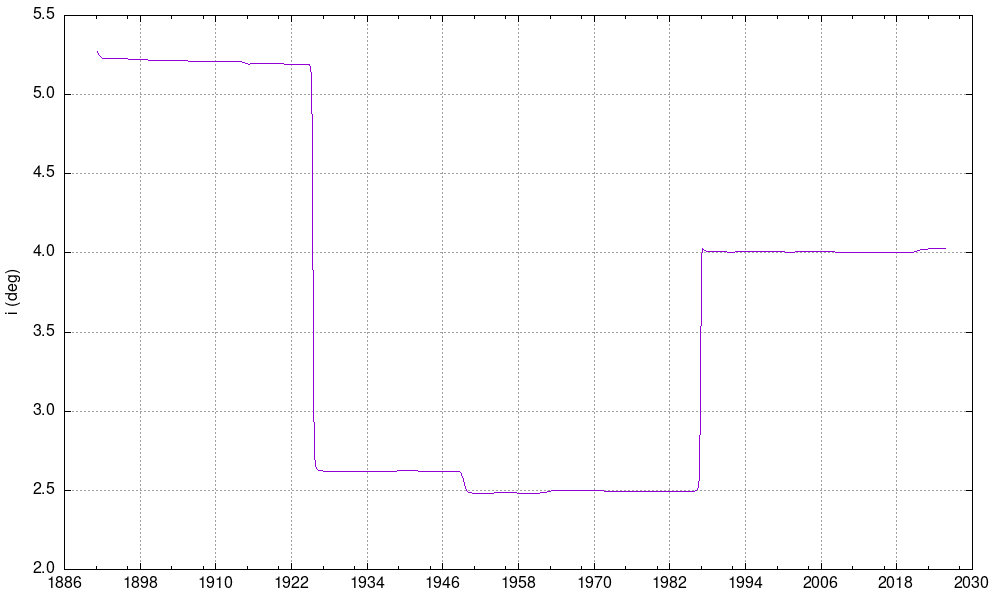
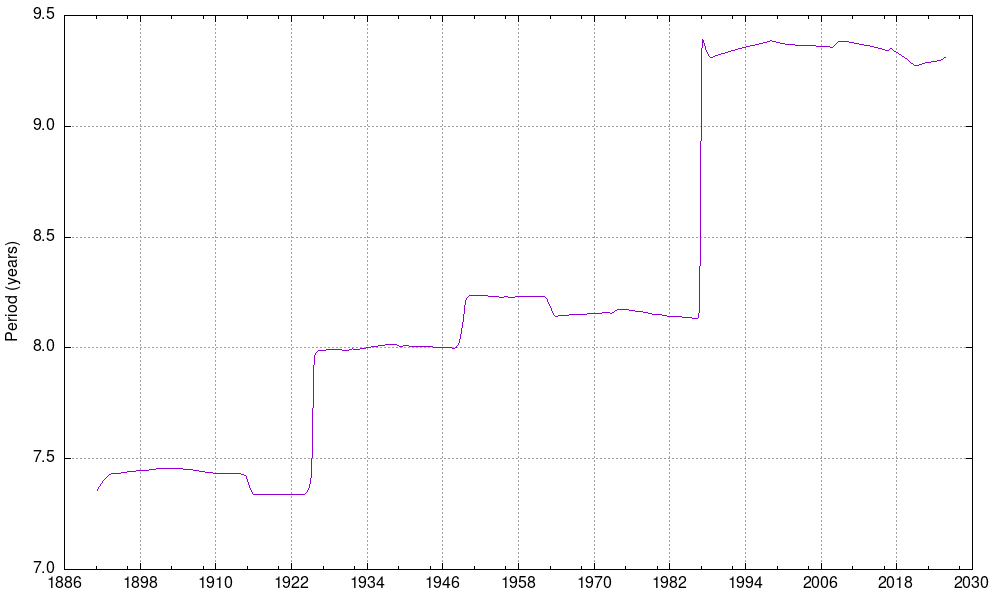
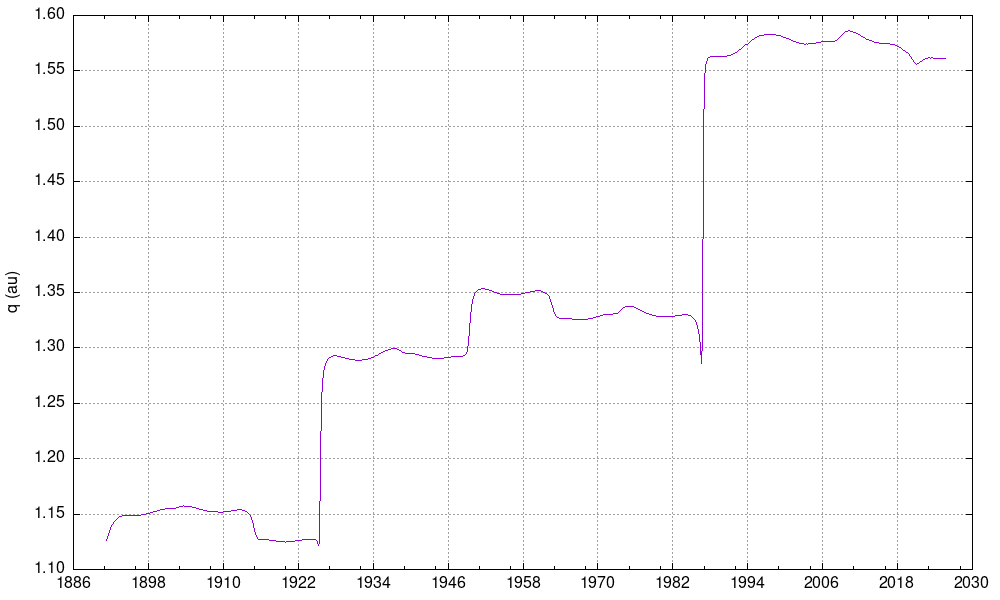
https://britastro.org/wp-content/uploads/2024/07/2007HE4-20070418.875_PBirtwhistle.bmp
| The British Astronomical Association supports amateur astronomers around the UK and the rest of the world. Find out more about the BAA or join us. |
